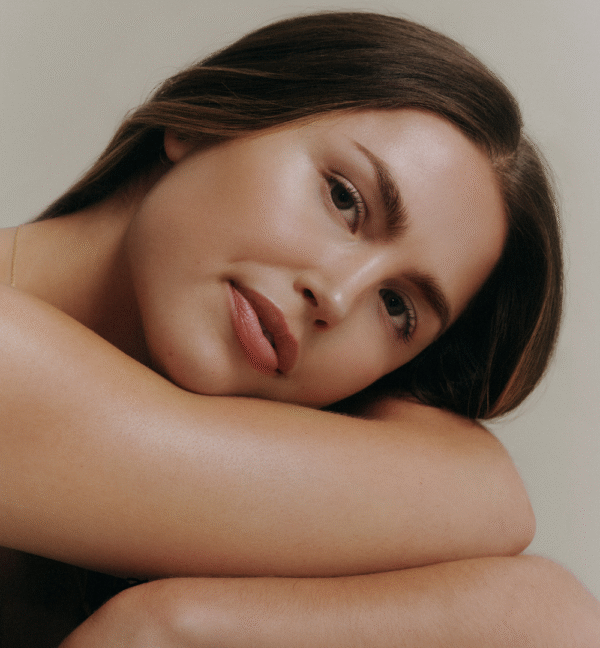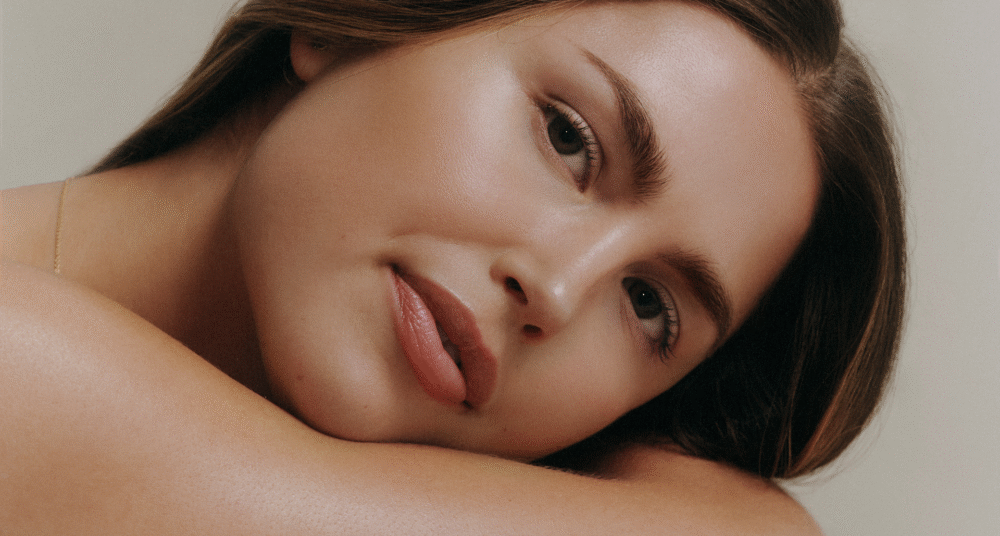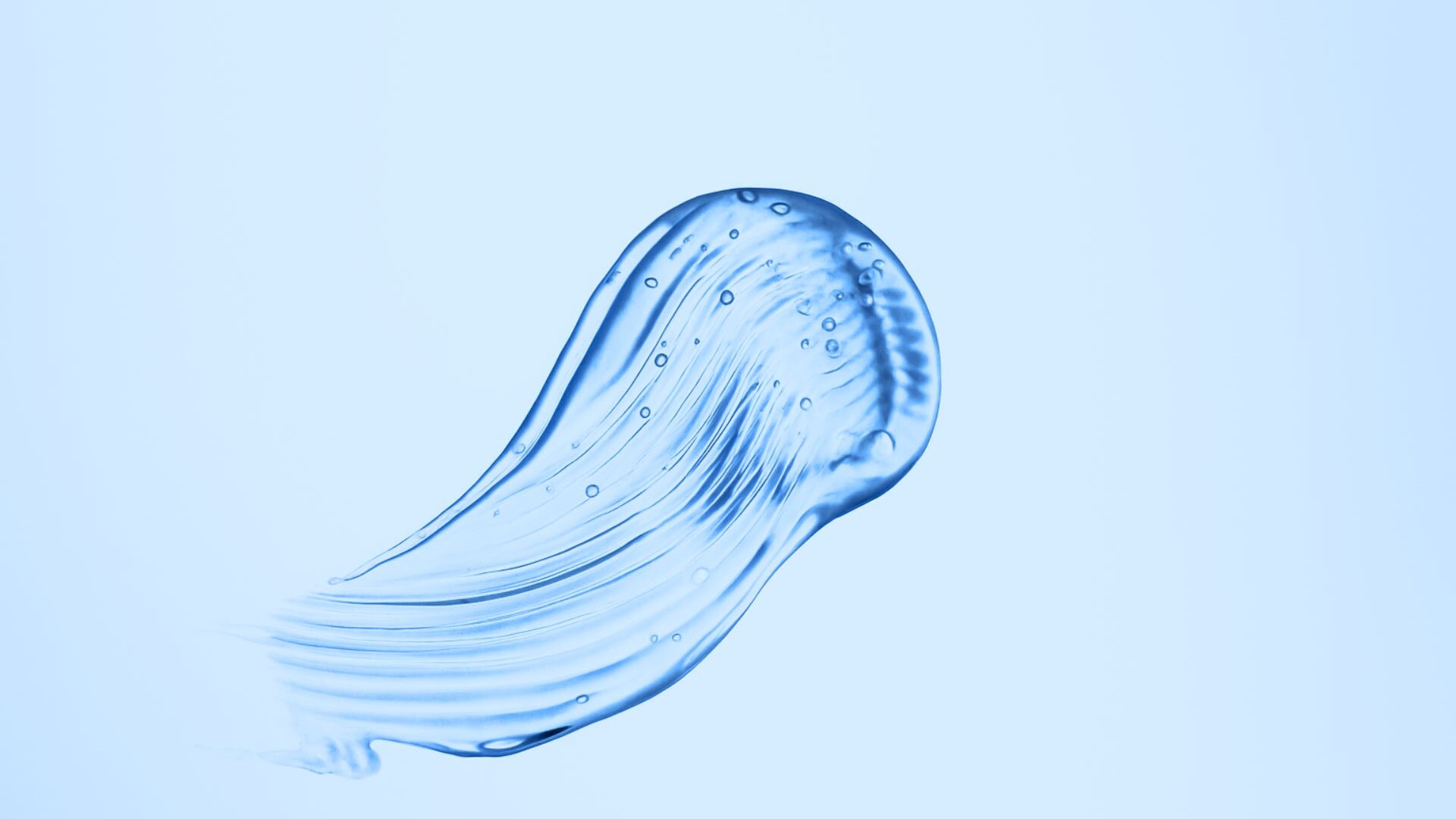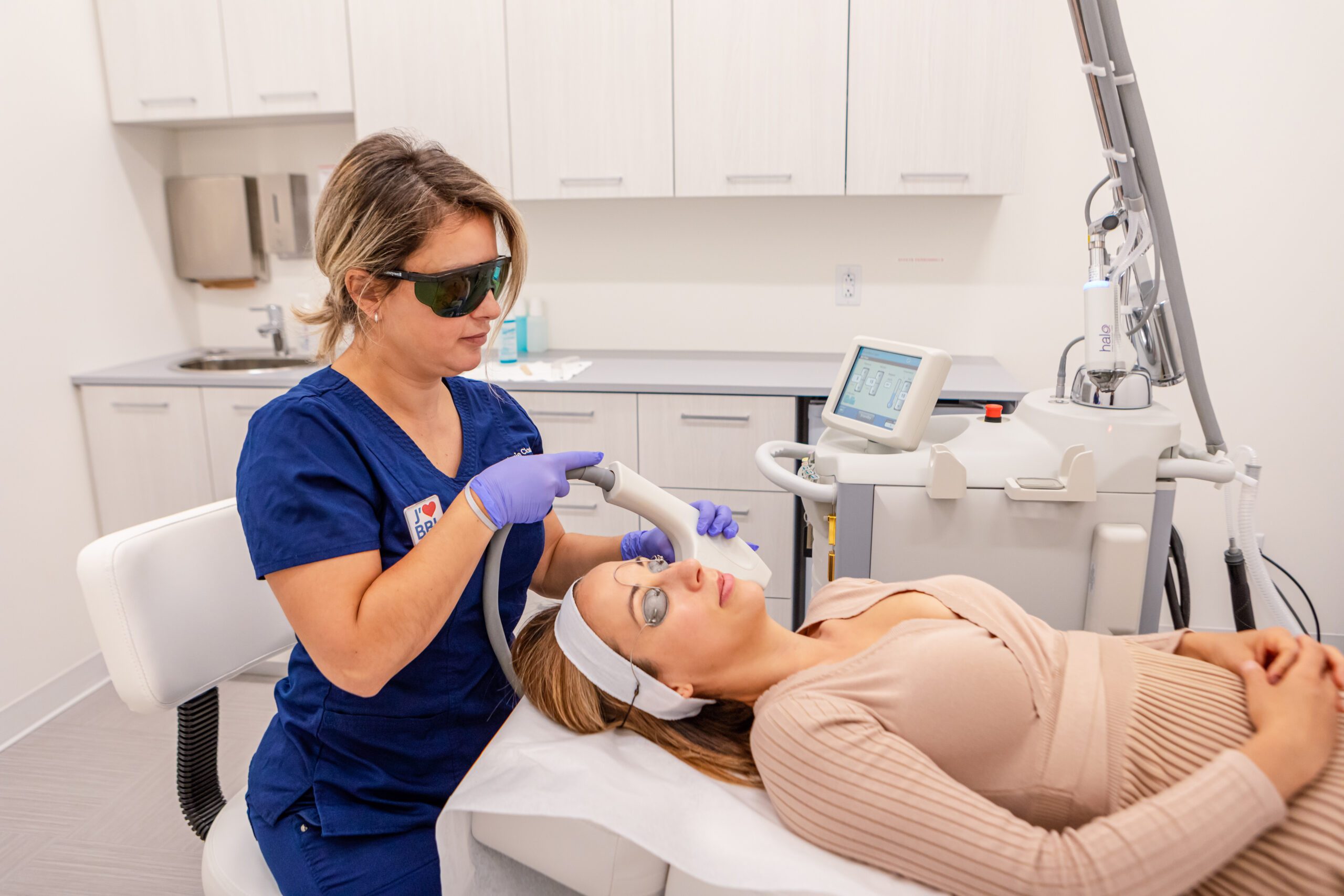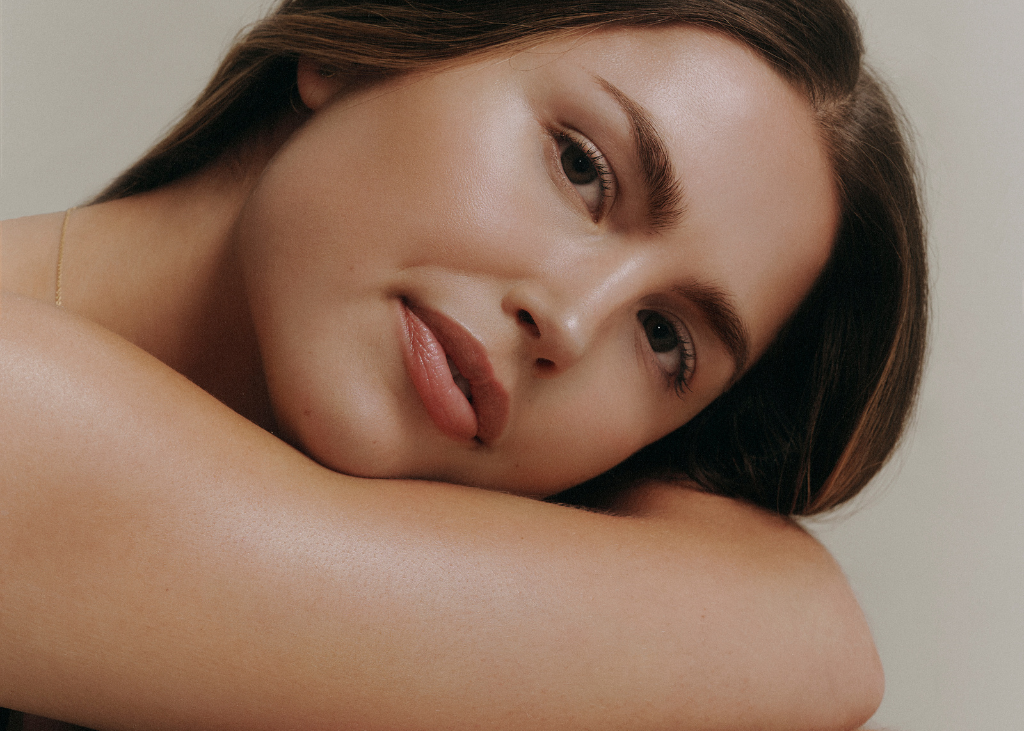Red light therapy has become a popular topic in skincare. From glowing LED masks to promises of wrinkle reduction and clearer skin, it seems like a simple solution for a wide range of concerns. But how effective is it really?
At Victoria Park Medispa, we believe in honest, informed choices. This article explains what red light therapy is, how it works, what at-home LED masks can offer, and why they are often misunderstood.
Table of Contents:
- Red Light (630 to 660 nanometres)
- Near-Infrared Light (810 to 850 nanometres)
- Why Does the Difference Matter?
- How Does the Light Help Your Skin?
What Does Red Light Therapy Do for the Skin?
Why Red Light Therapy Is Not the Same as BBL
What Is Red Light Therapy?
Red light therapy is a skin treatment that uses specific types of light to help your skin look and feel healthier. It’s painless, safe, and doesn’t involve any heat, needles, or downtime.
There are two main types of light used in red light therapy, and they each affect the skin in different ways:
1. Red Light (630 to 660 nanometres)
This light is part of the visible spectrum, meaning you can actually see it as a soft red glow. It works on the surface of the skin and slightly below. Red light is commonly used to:
- Help reduce redness or inflammation
- Support the skin’s ability to heal
- Gently boost collagen for smoother texture
This is also the type of red light most often used in at-home LED masks. However, while the wavelength is the same, the strength is not. Consumer devices are much lower in power than clinical tools, which limits how deeply the light can reach and how much change it can create in the skin.
It’s a good option for calming sensitive skin, softening fine lines, and giving skin a brighter, more even tone.
2. Near-Infrared Light (810 to 850 nanometres)
This light is just outside what the human eye can see, it looks invisible, but it still reaches deeper into your skin. It can affect the lower layers of the dermis, where important skin structures like collagen and blood vessels live.
Near-infrared light is thought to:
- Support deeper tissue repair
- Improve blood circulation
- Assist with healing after treatments or injury
This type of light is more commonly used in medical or professional settings, where stronger tools can safely reach those deeper levels.
Why Does the Difference Matter?
Think of your skin like a garden.
- Red light waters the flowers and topsoil, helping the visible skin stay healthy and glowing.
- Near-infrared light waters the roots, supporting long-term structure, firmness, and deeper healing.
Both types have a purpose, but they don’t do the same job. And not all devices use both. That’s why understanding the light type helps set the right expectations about what your mask or treatment can actually do.
Many at-home LED masks, for example, focus on visible wavelengths like red or blue light, but often leave out near-infrared entirely. NIR LEDs tend to be more expensive, and their benefits like deep tissue repair and improved circulation are less cosmetic and more therapeutic. There are also added safety and regulatory considerations with wavelengths that penetrate deeper into the skin. As a result, most consumer-grade devices prioritize surface-level effects.
At Victoria Park Medispa, we go deeper. Our clinics use medical-grade Celluma LED devices that combine both red and near-infrared light to deliver comprehensive results. This dual-wavelength technology allows us to treat the skin more holistically, targeting visible concerns at the surface while supporting collagen production, cellular repair, and deeper tissue health beneath.
How Does the Light Help Your Skin?
At the simplest level, this light gives your skin cells a boost. Inside every cell, there’s a part called the mitochondria, which acts like a battery pack. When red or near-infrared light hits the cell, it activates an enzyme called cytochrome c oxidase, which helps that battery make more energy (called ATP).
More energy means your skin cells can:
- Repair damage more effectively
- Reduce inflammation
- Build more collagen over time
This process is called photobiomodulation, which is kind of like photosynthesis for your skin. It uses light to help your cells produce energy and function more effectively, and it has been studied for years. Researchers have found that this kind of light can improve how skin cells function, especially when used consistently (Choi et al., 2024).
What Does Red Light Therapy Do for the Skin?
The effects of red light therapy depend heavily on both the type of light used and how powerful the device is. Most at-home LED masks use low-intensity red light, which stays close to the skin’s surface and may support mild improvements over time. Professional devices, however, use stronger light that penetrates deeper and stimulates more noticeable skin changes.
Depending on the device, red light therapy may offer:
- Slight improvements in texture
- Calmer skin with less inflammation
- A reduction in mild redness
- Support for skin healing
However, the effects are subtle and build slowly. Red light therapy does not remove dark spots, tighten loose skin, or reverse deep signs of aging. It supports the skin, but it does not transform it.
Do LED Masks Work?
Yes, LED masks can work if they are used regularly and over time. These wearable devices typically use red light in the 630 to 660 nanometre range, which targets the outer layers of the skin. Some devices also include near-infrared wavelengths (810 to 850 nm), which reach slightly deeper, though not all at-home masks offer this feature.
It’s important to understand that not all red light is created equal. Even when devices use similar wavelengths, the intensity of the light makes a major difference. Clinical red light treatments use higher-powered devices that penetrate deeper and trigger more significant cellular responses. At-home masks are designed with very low intensity for safety reasons, which limits how much impact they can have.
So while the light might sound the same on paper, the results are not. The outcomes you can expect from a home device will be far less noticeable than what’s possible with a clinical-grade treatment.
You must use most masks three to five times per week for 10 to 20 minutes per session. It can take eight to twelve weeks before any improvement appears, and even then, the results tend to be small.
What LED Masks May Help With:
- Mild redness
- Skin tone and glow
- Overall skin support
What LED Masks Cannot Do:
- Fade sunspots or pigmentation
- Tighten skin or improve laxity
- Treat visible blood vessels or deep redness
- Deliver long-term results without ongoing use
LED masks are often marketed as a replacement for clinical treatments, but this is not accurate.
Why Red Light Therapy Is Not the Same as BBL
One of the most common misunderstandings is that red light therapy and BroadBand Light (BBL) are similar. They are not.
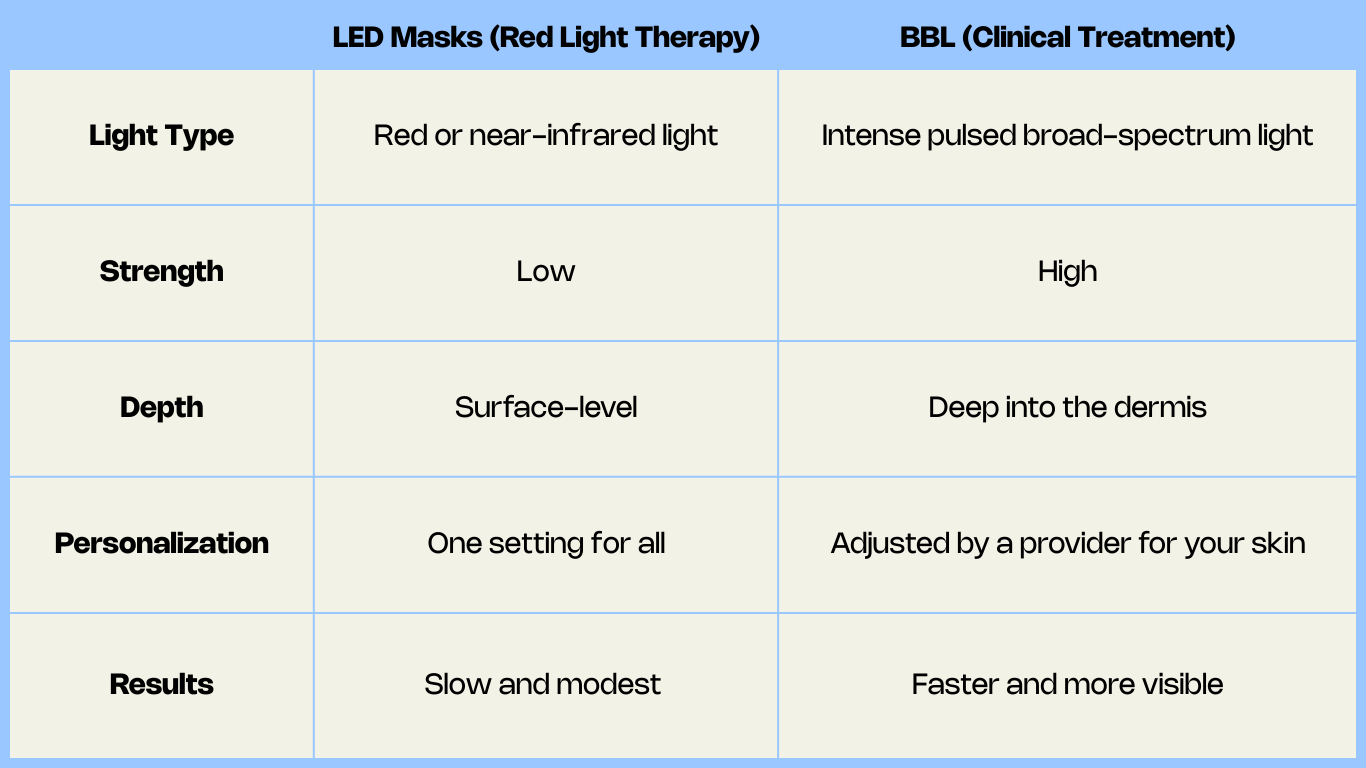
BBL is a medical-grade treatment that addresses issues like sun damage, age spots, rosacea, and visible aging. It is performed in a clinical setting and offers real, corrective results.
To better understand the differences and the results BBL can offer, read our full BBL blog here.
How the Costs Compare
LED masks often cost between $300 and $800. While this may seem affordable, the return is low unless you commit to frequent, long-term use.
By comparison, a full treatment series of four BBL sessions costs approximately $1,635, or about $408 per session.
Comparing Cost per Result:
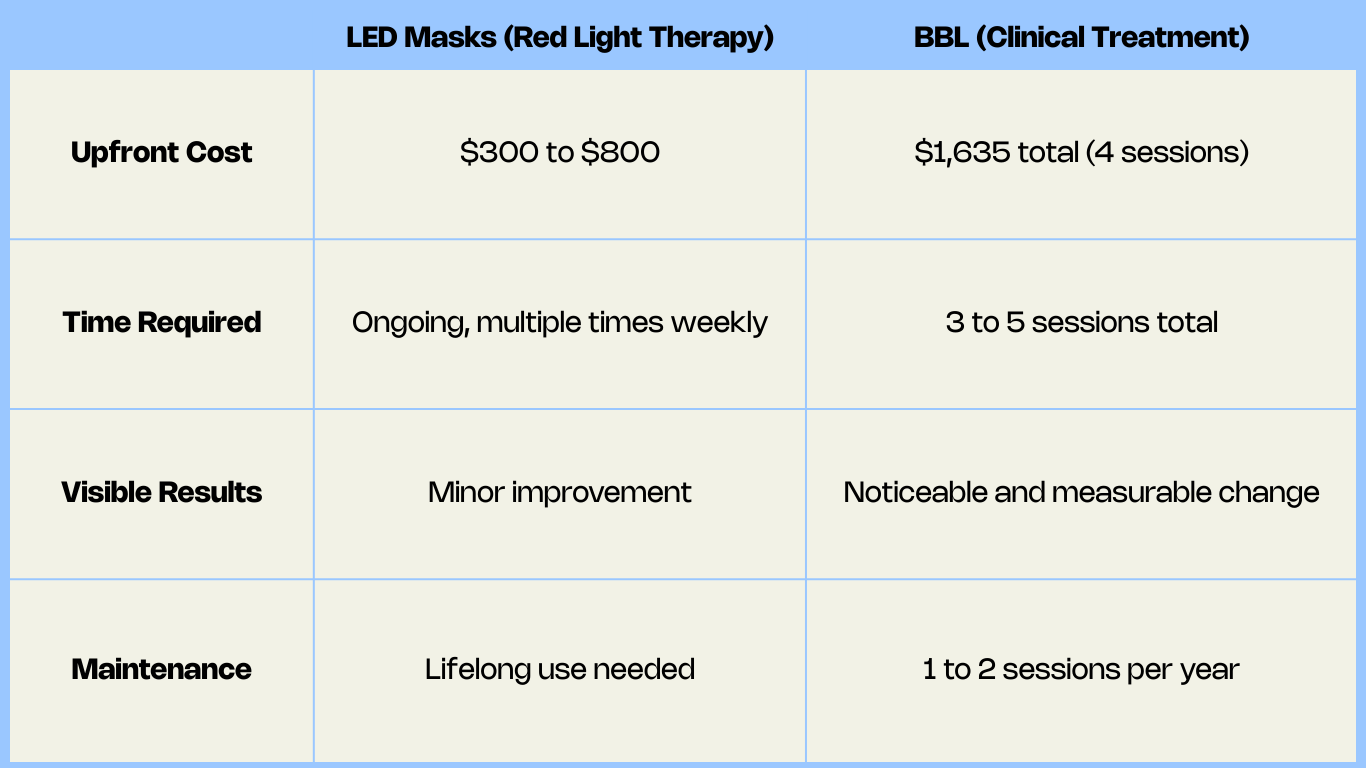
LED masks are low in power, so they take longer and offer smaller results. BBL is stronger, more targeted, and requires fewer sessions to achieve visible change.
Results shown are after just one BBL treatment. We typically begin with a package of 4 sessions, followed by 1–2 maintenance treatments per year to sustain results.
Should You Invest in an LED Mask?
For some, an LED mask may be a helpful addition. For others, it may not be worth the time or money. Here’s how to decide.
Pros:
- Safe for most skin types
- Easy to use at home
- May improve general skin health over time
- Can support results between clinical treatments
Cons:
- Slow and modest results
- Cannot treat specific concerns
- Requires ongoing, long-term use
- May degrade in quality after 1 to 2 years
Time Commitment:
LED masks require consistent use, often five times per week, to maintain effects. If used irregularly, the benefits fade quickly.
Device Longevity:
Most masks begin to lose brightness and effectiveness within one to two years. Some people upgrade frequently, which adds to the overall cost. Newer, more advanced models may also become available, making older devices outdated.
Conclusion
Red light therapy can support healthy skin. But LED masks, while convenient, should not be expected to transform your appearance or replace in-clinic treatments. They are best used as a supplement, not a solution. Clinical-grade technologies like BBL offer the precision, intensity, and customization needed to create real, visible change in the skin.
Summary:
- Red light therapy uses light to gently boost skin cell energy
- LED masks work for mild support, not correction
- Red light therapy is not the same as BBL or other clinical options
- Professional treatments like BBL offer faster, deeper, and longer-lasting results
- LED masks require more time, more commitment, and deliver less visible change
For true skin transformation, professional care remains the most effective and efficient approach.
Book a consultation at Victoria Park Medispa to receive a full skin assessment and learn how clinical BBL can deliver real and lasting results tailored to your skin’s needs.
Own your extraordinary.
Recent
articles
References
- Choi, K., Kim, H., Nam, Sy. et al. Enhancement of skin rejuvenation and hair growth through novel near-infrared light emitting diode (nNIR) lighting: in vitro and in vivo study. Lasers Med Sci 39, 104 (2024). https://doi.org/10.1007/s10103-024-04044-9
